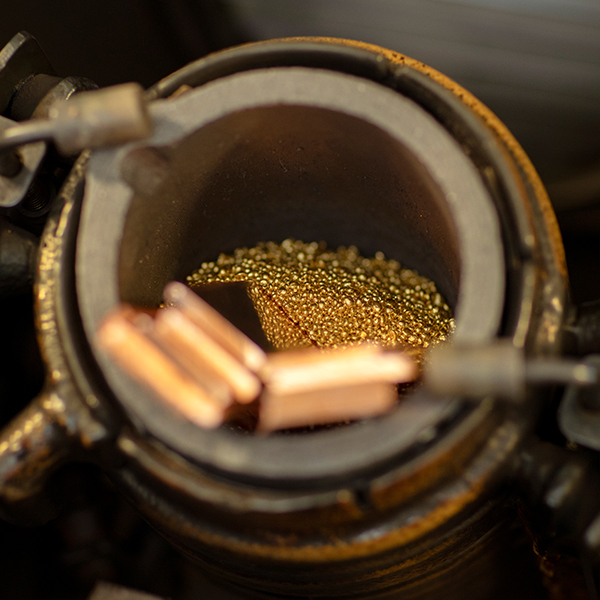A bad football match is one where players spend a lot of time passing the ball but no-one actually scores - which is how it can often seem in the match between watchmakers and sustainable development. Consumers want brands to show more environmental responsibility but aren’t prepared to change their buying habits: a gold watch on a leather strap. And when the industry does take the occasional initiative, it’s criticised for being exactly that: too little, too infrequently.
Unlike football, everyone can win at this game, which is where Ethiwork comes in. Set up in 2018, this “impact studio” helps watch and jewellery brands understand corporate social responsibility (CSR) principles and implement a results-driven policy.
“The watch industry has a solid base”
Changes appear to be taking place both upstream of the product (mining, refining, tanning, recycling, traceability, human rights) and downstream (customer expectations, new materials and transparency).
“For luxury watchmaking as well as jewellery, the hot topic is responsible sourcing of rare raw materials, in particular gold, precious stones and exotic leathers,” explains Ethiwork’s co-founder, Céline Dassonville. “Mining produces CO2 emissions, pollutes soil, contaminates groundwater and is damaging to the surrounding ecosystem and biodiversity. At the same time, the preciousness and scarcity of raw materials has given rise to exemplary practices in terms of eco-design. The watch industry has a solid base. Tier three, four and five suppliers are where the risks of malpractice are.”

Shame on you
Scandals are rare, but when they do happen, they make a lot of noise. A few months ago, a refining company based in Ticino, Switzerland, was lambasted when it unwittingly allowed dirty gold to enter its production circuit via a subcontractor, causing collateral damage for the watch and jewellery companies it supplies.
“Regulatory and industry bodies keep a close watch on the provenance of gold, but greater collaboration is needed to properly address these issues,“ says Céline Dassonville. Human Rights Watch is one organisation keeping tabs on gold mining through its annual report, which rates individual companies according to their responsible sourcing practices: a “name and shame” that has executives quaking in their shoes.
One metal, multiple sources
Watch and jewellery brands have work to do in two areas. The first is to take a responsible approach towards sourcing. “Choices exist,” insists Céline Dassonville. “Take gold, for example. There’s industrially mined gold, such as from Canada or the United States. Then there is recycled gold from electronic devices. Traditional refiners are in the process of adapting their structures to make this a more systematic part of their offer, but the cost remains 5% to 10% higher than for mined gold. Thirdly, there is gold from artisanal and small-scale mines that don’t use mercury. These mines benefit from initiatives developed, for example, by Fairtrade, Fairmined, the Swiss Better Gold Association or Chopard, but they can only produce small quantities, no more than a few tons per year and only a tiny percentage of what the luxury sector needs.”

The second is communication; not second nature for Swiss manufacturers. This goes a long way towards explaining why French luxury giant Kering, which is more open on the subject, has claimed such a large share of the CSR voice. Swatch Group is far from inactive but communicates relatively little. As for Richemont, its efforts focus mainly on recycled gold, through its own Varinor refinery.

$50,000 for pineapple?
Among customers, the attitude is often “do as I say, not as I do”. “It’s the blue dial syndrome,” whispers one retailer. “Everyone loves the new watch with the electric blue dial but when it comes to handing over the money, it will always be for a white dial and black crocodile strap. Liking is one thing, buying is another. We’re in an extremely conservative environment.”
So is it fair to say that customers aren’t prepared to put $50,000 into a watch with a recycled gold case and a pineapple leather strap? “There is still the matter of image,” says Céline Dassonville. “It’s a question of educating the consumer, too. Despite this, we are seeing the emergence of a circular economy in watchmaking that’s using recycled gold, as well as steel and titanium, and producing straps from ethical leather, or from plant-based and synthetic materials that provide the same level of quality and durability.”
Panerai, paving the way for circularity?
One of the brands spearheading change is Panerai. It came to Watches and Wonders with a Submersible e-Lab-ID that contains 98.6% recycled materials by weight: an unprecedented amount measured with unprecedented precision, although this doesn’t alter the fact there will only be 30 of them at €60,000 a pop – still a highly conceptual “gamechanger” that won’t produce the critical mass of customers needed to trigger a real shift towards circular watchmaking.
The transition to sustainability will only take place if the industry behemoths (in volume sales) adopt a circular economy model: that’s Rolex, Omega, Longines and Tissot, among others (according to industry numbers). For change to happen, the market must take the lead. Not the consumer.






